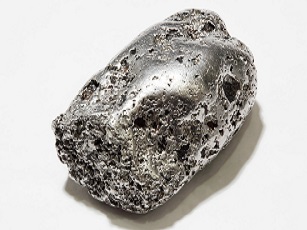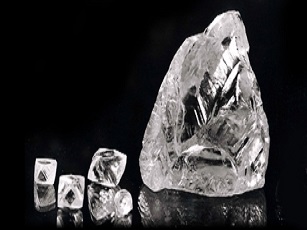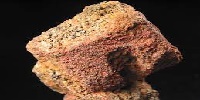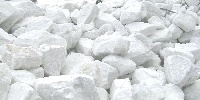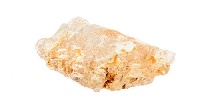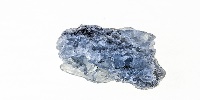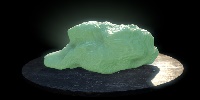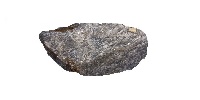Yttrium Mining
YTTRIUM MINING:
Yttrium is one of the Rare Earth Elements (REE) found on Earth, alongside lanthanides and scandium. Yttrium is a common element that occupies the Earth's surface.
ORES:
Yttrium occurs with Rare Earth Element ores such as bastnäsite, xenotime, and monazite. It also occurs in ion absorption clays, samarskite, and fergusonite.
MINING:
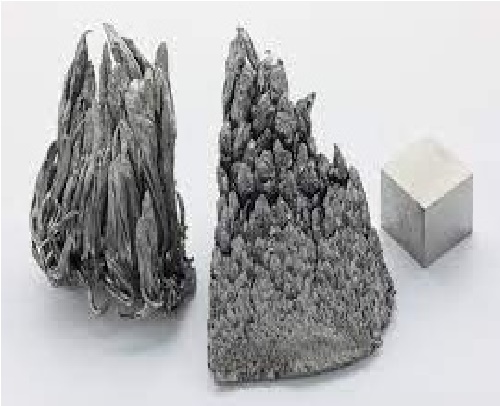
Bastnasite is a carbonate fluoride REE ore containing an average of 0.1% yttrium. This ore, which includes yttrium, is mined using the open-pit surface mining method. The pit is structured in steps to facilitate easy extraction and transportation. Bastnäsite was mined from 1940 to 1960 in California, USA.
Monazite is found in alluvial or placer deposits and is mined using scrapers and excavators. Scrapers remove dirt from the upper layer of the placer deposits, while excavators dig out the ores. The ore is then collected and transported to nearby processing units. Monazite contains an average of 2% yttrium and is mined in South Africa and Australia.
Xenotime is mined as an accessory ore for gemstones in various regions. It is extracted using the open-pit method. Areas where xenotime is widely mined include Bayan Obo, China; Arendal and Tvedestrand, Norway; Novo Horizonte, São Paulo, Novo Horizonte, Bahia, and Minas Gerais, Brazil; Madagascar; and California, Colorado, Georgia, North Carolina, and New Hampshire, United States, as well as the north of Mount Funabuse in Gifu Prefecture, Japan.
Processing and extraction:
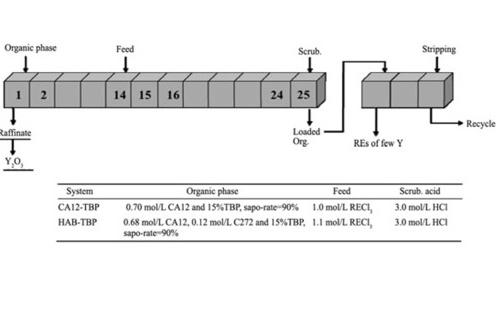
The separation of yttrium from bastnäsite and xenotime is a complex process. Firstly, the ores are leached with sulfuric acid. After leaching, oxalic acid is added to introduce the ore to ion exchange chromatography. The oxalic acid precipitates yttrium as oxalate salts. These yttrium oxalates are then converted into yttrium oxides by reacting with oxygen. Subsequently, yttrium oxide is converted into yttrium fluoride by reacting with hydrogen fluoride. Quaternary ammonium salts act as extractants in the ion exchange chromatography, holding yttrium in the aqueous phase while separating other lanthanides from it. This process yields 99.9% pure yttrium salts.
In monazite sand ores, yttrium is separated and extracted using several methods. The first step involves grinding the sand to micrometers. The ground ore is then dissolved in concentrated sulfuric acid and leached with water for 12 hours. The resulting leachate undergoes filtration to remove undigested ores, resulting in filtered ore known as monazite sulfate.
The monazite sulfate is neutralized and filtered, resulting in the formation and removal of thorium precipitate. It undergoes another filtration and neutralization process, during which lanthanides with yttrium precipitate and are separated. Yttrium is further separated from these lanthanides using ion exchange chromatography. The countries producing yttrium include China, India, Brazil, Australia, and the United States.
DEFINITION:
Yttrium is a chemical element with the symbol Y. It is a silvery-metallic transition metal chemically similar to the lanthanides and has historically been classified as a rare earth element. Yttrium is almost always found associated with the lanthanides in rare earth minerals and is never found in nature as a free element.
PROPERTIES:
Yttrium is a soft, silver-metallic, shiny, and highly crystalline transition metal in group 3. As predicted by periodic trends, it is less electronegative than its predecessor in the group, scandium, more electronegative than its successor in the group, lanthanum, and less electronegative than the next member of period 5, zirconium. Yttrium is the first d-block element in the fifth period.
The pure element is relatively stable in air in bulk form due to passivation resulting from the formation of a protective oxide film on its surface.
APPLICATION:
Yttrium is found in most rare earth minerals, as well as some uranium ores, but is never found in nature as a free element. About 31 ppm of the Earth's crust is yttrium, making it the 28th most abundant element there and 400 times more common than silver. Yttrium is available in soil in concentrations between 10 and 150 ppm and in seawater at 9 ppt.
Utilized in the manufacturing of synthetic textiles and yttrium iron garments.
Functions as a solid electrolyte and serves as an oxygen sensor in automotive exhaust systems.
Employed in the production of superconductors.
The radioactive isotope Y-90 aids in treating various cancers such as lymphoma, leukemia, and bone cancers.
Related Mining

